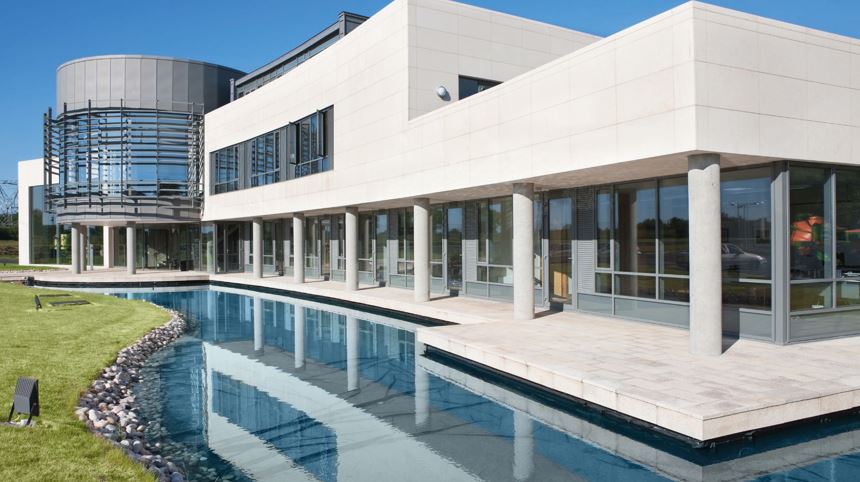
The climate crisis is a potential health crisis. And yet healthcare, if only due to the substantial construction, transportand heating / air condition emissions that such a large organisation generates, is a not insignificant contributor to climate change. The NHS, according to its own sources, is responsible for 5% of the UK’s carbon emissions. As the then former of NHS England admitted, health services jointly contribute the same level of emissions as the country currently ranked as the world’s fifth-largest emitter.
In addition to real estate, healthcare is responsible for other significant pollutants. There is an irony in the fact that asthma inhalers, increasingly necessitated by air pollution, release an incredible 4% of all NHS emissions, through their use hydrofluoroalkane as a propellant. But progress is being made: switching 10% to dry powder inhalers has already reduced CO2 emissions by the equivalent of taking 120,000 cars off the road.
NET ZERO
Achieving net zero is a considerable undertaking for an organisation as large as the NHS, especially taking into account funding and other constraints. But in its policy document Delivering a ‘Net Zero’ National Health Service, the NHS has committed to doing so by 2040 and is already making significant progress. From meat-free Mondays in canteens, to the first baby born with a gas-and-air system that captures the polluting gas instead of emitting it, changes are taking place throughout the country. Despite the many constraints, there is substantial best practice emanating from the NHS. Earlier this year, plans for what is believed to be the UK’s greenest hospital were approved. The new Velindre Cancer Centre in Cardiff is being developed to comply with the Wellbeing of Future Generations (Wales) Act 2015 and its design utilises low embodied carbon and bio-based materials that support a circular economy and promote health and wellbeing. The centre will be all-electric and is manufacturing components off-site to reduce site waste and minimise transportation. Its landscape strategy is to keep the site as wild as possible by retaining existing habitats and creating new habitats alongside new landscaped spaces such as an orchards and a community kitchen garden.
It was encouraging, too, to see plans to power Torbay Hospital with a £3.1m solar park approved last May. The 3.9 hectares of solar panels will provide 3.2 megawatt peak of power and will last for approximately 25 years. And in Newcastle, travel emissions were reduced by 43% as a result of remote consultations and a focus on walking, cycling and electric buses for staff increased this figure further. Carter Jonas has worked with NHS Trusts on a number of sustainable initiatives.
In Leeds, we work for Leeds Community Healthcare NHS Trust, which includes both Leeds General Infirmary (LGI) and St James’ Hospital has many existing challenges to overcome to enable it to meet net zero in the next 17 years. LGI comprises a medley of interlinked premises from the iconic 1868 Sir George Gilbert Scott designed buildings to the modern Martin and Jubilee wings, the latter accommodating a helipad.
STRATEGY
And yet sustainability is at the heart of the Trust’s built environment strategy, which aims to achieve net zero operational carbon and minimal embedded carbon, conservation of resources and nature-based design solutions. Already the Trust has succeeded in promoting active travel, improving biodiversity and green spaces, investing over £20 million in energy saving projects and facilitating remote GP appointments. Construction is a major contributor to emissions, accounting, according to the 2019 Global Status Report for Buildings and Construction, for almost 40% of CO2 emissions. And so, we are pleased to work with the NHS on gaining planning consent for construction projects which have lower emissions rates. Carter Jonas has worked with both Leeds and other hospital trusts to create new community diagnostic centres, part of a programme announced in October 2021.

Many of these centres use modular construction, which can reduce emissions by approximately 54%. In terms of sustainability, another important factor of these new community diagnostic centres is that they are planned to integrate effectively into a community. Not only does this limit cross-contamination (an important post-Covid consideration) but it also supports local high streets. A consideration in the built environment world post Covid has been the need to respond to an increased awareness of local community. And as some high streets declined in 2020 through lack of footfall, changes to the planning use classes were made to facilitate the change of use from one high street use to another.
CLASS E
Class E came into use in September 2020. It incorporates, under the term ‘commercial, business and services’, a broad range of previously standalone use classes including A1-A3 (retail, food and drink and financial and professional services), B1 (office space), parts of D1 (including clinics, health centres, creches, day nurseries, and day centres) and D2 (gyms and most indoor recreations). Any changes between these uses now no longer requires a full planning application. So increasingly, healthcare facilities are occupying previously under-utilised retail units on high streets and in shopping centres which provides a local amenity, benefits community development and can help regenerate high streets – with the added benefit of freeing up much-needed space in hospitals.
Even within planning and development alone, the potential for change in the NHS is considerable. And with the drive to achieve net zero by 2040 so strongly embedded in NHS thinking, this together with change through other aspects of the NHS’ output has, and will continue to, help us tackle climate change.
